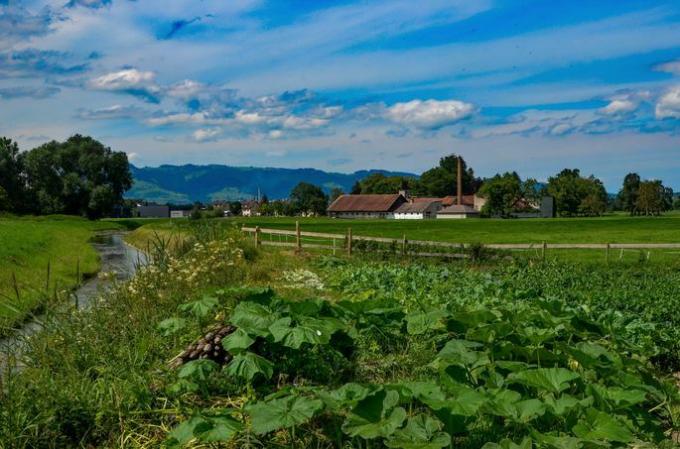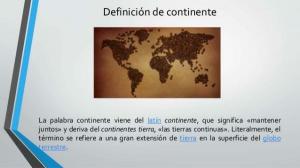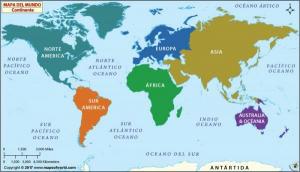Difference between latifundio and minifundio
A large estate It is a farm or group of farms located on a large area of land, generally exploited for agricultural purposes. It may belong to one or more owners, who usually use salaried labor for its operation and maintenance.
A smallholding It is a farm located in a short area of land. Although the interest of the farm is also agricultural, the smallholding bases its activity on agriculture subsistence, since the conditions or length of the land prevent it from operating with margins of cost effectiveness.
Although they have the same purpose, which is to take advantage of the land for agricultural work, the difference between the latifundio and the smallholding lies in the extension of the land, the number of personnel involved and the purposes of the exploitation agricultural.
| Large estate | Smallholding | |
|---|---|---|
| Definition | Large area of land, with one or more owners who carry out agricultural activities. |
Short lots or tracts of land, usually with one owner, used for agricultural purposes. |
| Characteristics |
|
|
| Examples | Farms, farms, farms | Small farms or rural houses. |
What is a latifundio?

A latifundio is an agrarian property, based on the accumulation of lots of fertile land, although generally they are not used to the maximum of their productive capacity.
In a large estate there may be one or more farms or estates, from which operational tasks are directed. These properties can belong to a person, family, or groups of people who have been associated to manage them.
There is no regulation that regulates the extension of large estates, therefore, it is common in Europe that it is considered latifundio to a property with hundreds of hectares, while in Latin America a latifundio has at least 10 thousand hectares.
Large estates have existed since the Roman Empire, in which the proletarian (“Those who only have children”) of landowners.
In the Middle Ages, it was the feudal society, made up of nobles and aristocrats, that had access to the lands. These were worked by the serfs of the gleba, the lowest social stratum. In the Modern Age, on the other hand, the process of conquest and colonization in America generated a distribution of the lands. These were worked by slaves and were exploited for economic purposes.
The independence processes, the abolition of slavery and a progressive establishment of democracy, generated a social reconfiguration, in which the latifundios were worked first by laborers (generally, peasants or descendants of slaves), and, finally, by men free.
Although it could be expected that large areas of fertile land generate a great productive and economic impact, the reality is that many large estates are managed with obsolete technologies and low-skilled labor, which generates an inefficient use of the land. That is why various governments have proposed agrarian reforms that seek to generate a redistribution of the land, in order to prevent the grabbing of fertile areas, and a substantial improvement in its productive potential.
In this sense, it is worth mentioning the Agrarian Law implemented in Mexico in 1915 by Venustiano Carranza, which would later become the legislation on which the reform would be developed agrarian.
This was the first legal framework that laid the foundations for the distribution of lands that were previously in the hands of large landowners, and that As of the implementation of the new law, they would be distributed among farm workers, with the ejido as the new distribution model. agrarian.
Ejidos are collective lands that cannot be divided, inherited, or sold. They have legal representation and the purposes of their production are marketing and self-consumption.
Article 27 of the Mexican Constitution of 1917 establishes in a definitive way what the Agrarian Law had already proposed, when establishing the ejidal, communal and private property rights, as well as the original rights of the nation over its lands and waters, and laying the foundations of the Agrarian Reform, which, although it has been modified over time, maintains the principle of supervised land distribution For the state.
Characteristics of the latifundio
Although the main characteristic of a large estate is the amount of hectares or land, it also has other notable aspects.
- The monopoly on land is not carried out for productive purposes, but for the accumulation of wealth: For centuries, the accumulation of land was used as a weapon of social status and economic power and political. However, their productive potential remained in the background.
- Large estates are usually located on the plains: flat lands are more favorable for However, this does not rule out the existence of large estates on land with other features.
- They may have one or more owners: generally, large estates are managed by family groups, although there are also cases in which they are made up of partners.
- Low productivity with respect to the amount of land exploited: although many large estates generate sufficient production to satisfy local demands, the quantity and quality of the fertile soils in which they are found could have a productive impact much older.
- Poorly skilled and underpaid labor: in many cases, large estates are under the care of peasants, laborers or laborers with basic agricultural knowledge, or who work under little competitive.
- Little or no investment in technology, tools and training: when the large estates do not have as their main objective the use of the land, the investment required for its maintenance is limited to the essentials, leaving aside the acquisition of tools or resources that could improve its processes productive.
- Low commercial competitiveness: the aforementioned reasons influence a low production that is seen reflected in an inability to supply the existing demand in the local market, either in terms of quality or amount.
What is a smallholding?

A minifundio is a short piece of land that is exploited for agricultural purposes. Generally, smallholdings originate in inheritances or successions of large estates, which divide the land into smaller parcels.
Minifundios can also be small plots of land owned by peasants, located in mountainous sectors, which makes the productivity of the land even more difficult.
Although it can be much more manageable in terms of operability, smallholdings are just as underutilized as large estates. In fact, in many cases what is produced is not even for commercial purposes, but for subsistence.
From all this it follows that smallholdings do not generate a real contribution to the productive process of the economy.
Characteristics of a smallholding
The minifundios are not only comparatively smaller in size than the latifundios. They are also not very productive, among other characteristics.
- The land area is very small: although there is no standardized measure for smallholdings, These are generally houses or properties in poor condition, with a short plot of land at their disposal. around.
- Generally, they do not have working personnel: many times the owner of the smallholding and his family are the ones who are in charge of the agricultural tasks.
- The production that is generated is for own consumption: the amount of production is so low that it is not even enough for local commerce.
- Land is wasted: Due to lack of knowledge, technology, labor and investment, the productive potential of the land is wasted.
Also know:
- Difference between rural and urban
- Difference between capitalism and socialism



